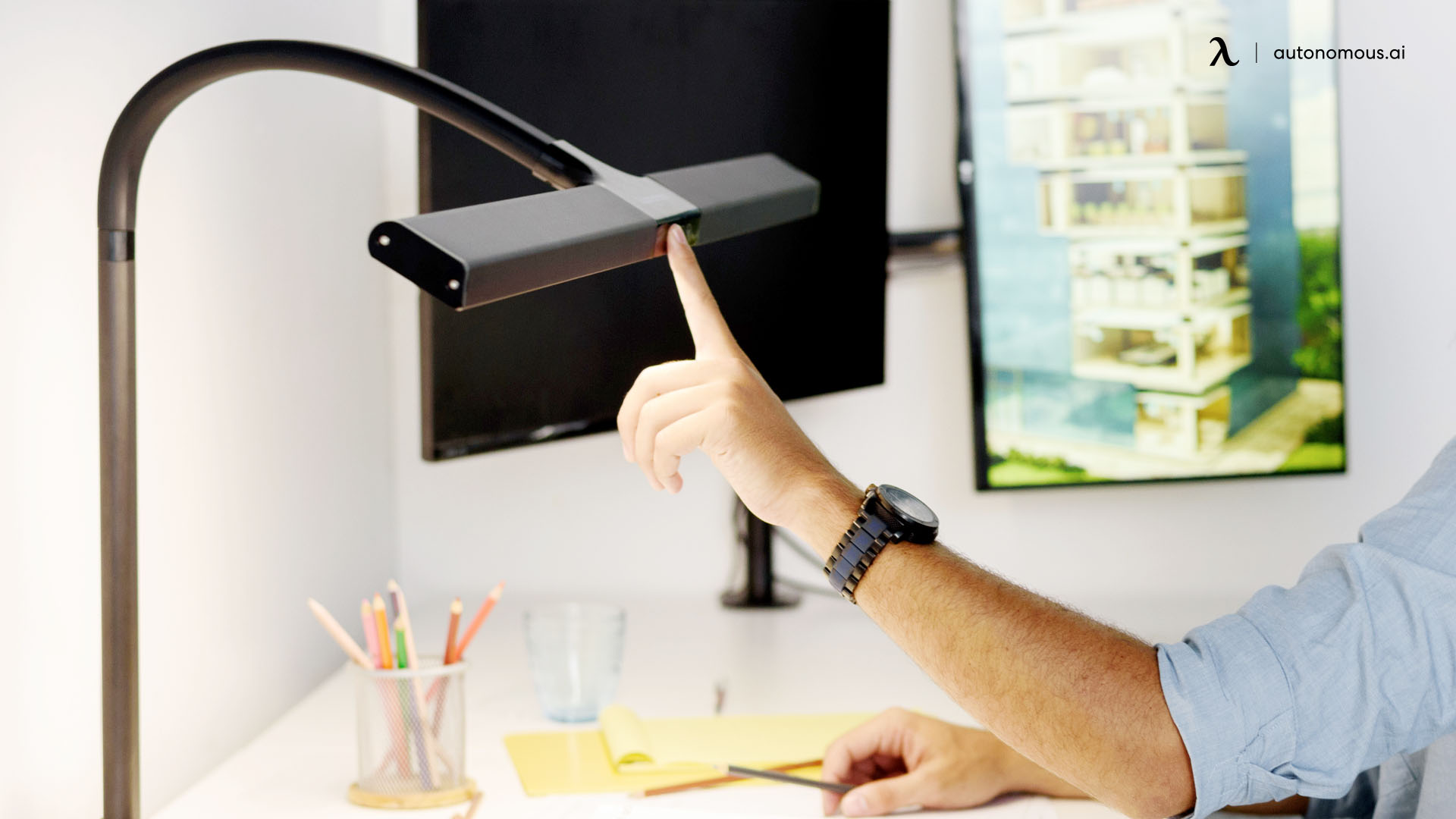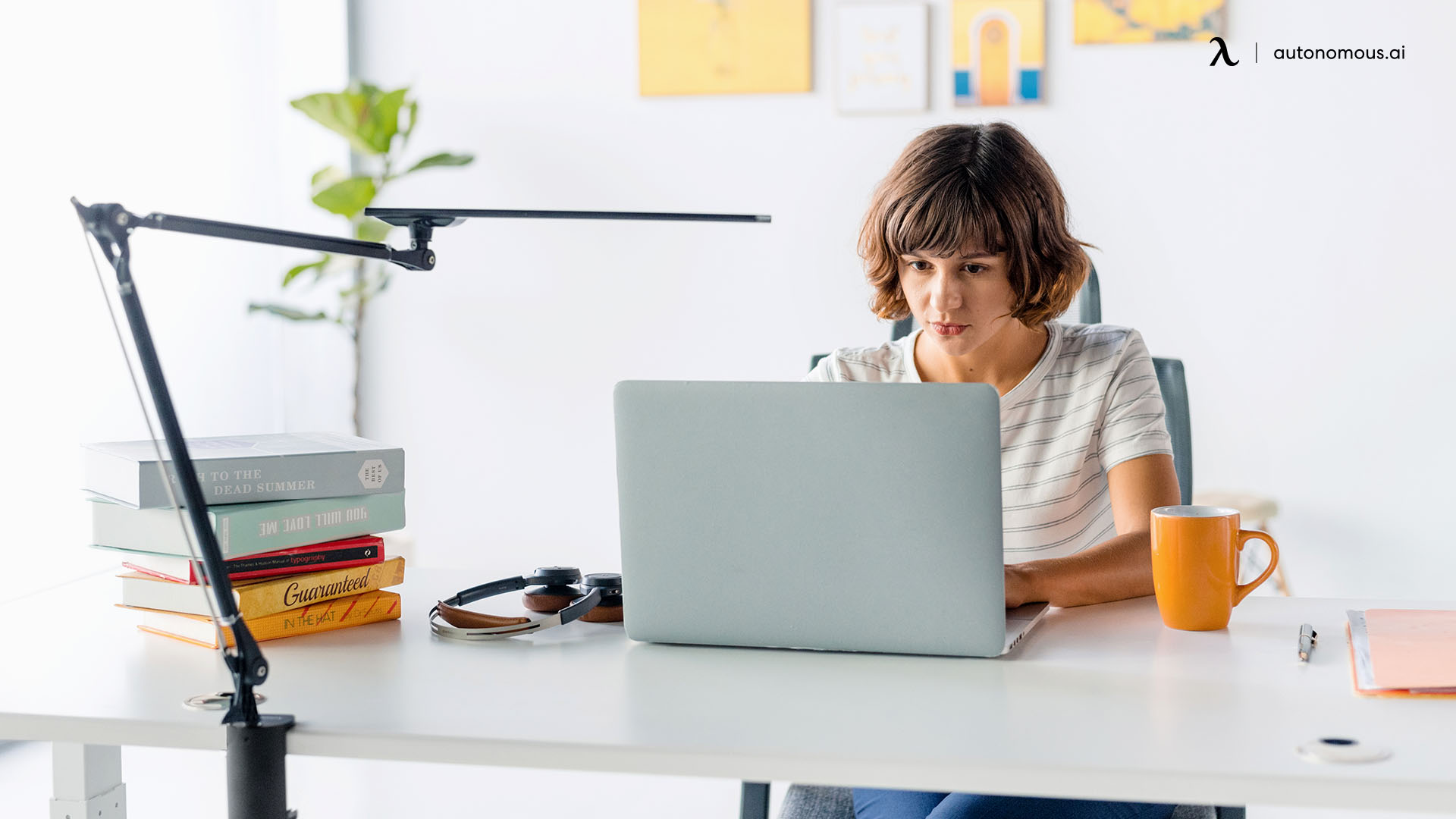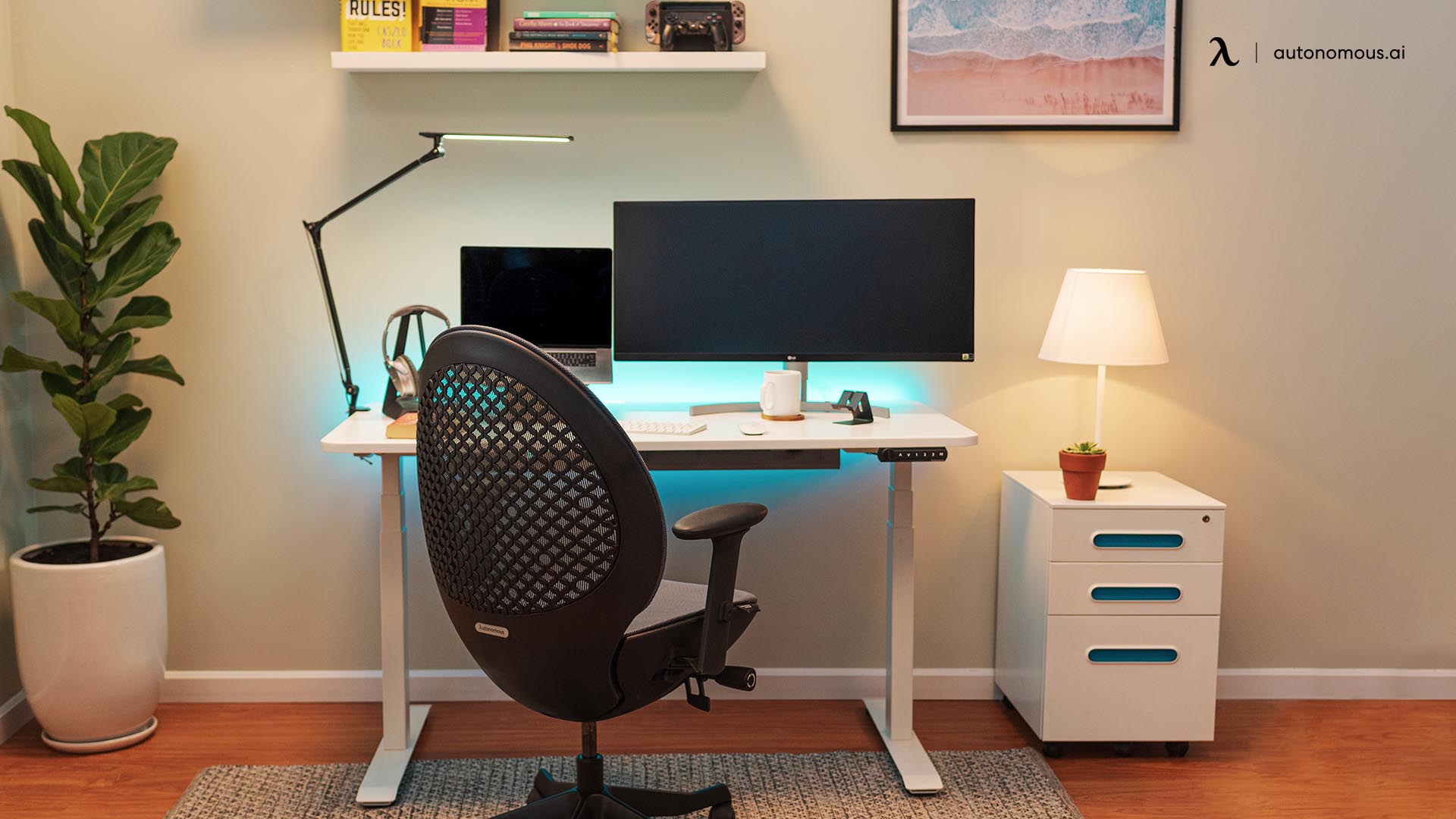
A Complete Guide to Lighting Ergonomics for Computer Users
Table of Contents
The principle of ergonomics applies to a broad range of areas. Most people think about standing desks, standing desk mats, office chairs, and other accessories that help with posture and support. One piece of the puzzle that tends to slip under the radar is the importance of lighting ergonomics for computer users.
Even if you are using a top-notch desk and chair, you can severely hamper your productivity, increase your susceptibility to errors, and negatively affect your mental alertness if you neglect ergonomic lighting for office. The damage can go even further, leading to blurred vision, eye fatigue, headaches, and Computer Vision Syndrome (CVS).
Below is an overview of why getting the proper office lighting for computer work is essential, and the steps you can take to preserve your visual health.
Importance of Proper Lighting for Computer Users
Finding the best lighting for your computer workstation should be a part of the process of workspace design. As you can deduce from the information above, the effects can start very mild, but things can begin to go seriously downhill after that.
Thankfully, the bulk of the more severe potential outcomes only occur after a continuous routine of exposing your eyes to improper lighting. Have you ever wondered why your mood and emotions sometimes go off the charts at work for seemingly no reason?
Apart from the more obvious physiological effects of lousy lighting, working in the wrong light color temperature can throw off an employee's mood. Unfortunately, that means the level of productivity takes a hit. Ergonomics encompasses employees, the tools they use, and the environment they work in.

Steps to Implement Proper Lighting for Computer Users
What can be done about the proper lighting for computer users? The information above explains the importance of lighting ergonomics for the office and the harmful effects of ignoring it. How can you tell you are on the right track, though?
Since proper lighting is not one of the most discussed topics, the amount of information available to help you is limited. Be that as it may, below is an overview of seven different principles that you can implement to ensure you have the best office lighting for computer work.
If you are going to be spending long hours in front of the computer anyway, you may as well be comfortable doing it.
1. Keep the Monitors Away from the Windows
You can think of glare as public enemy number one. Reducing glare should always be on your mind whenever you are making any lighting decisions. Computer screens can be tricky since they emit light themselves. Therefore, you need to be smart about finding the best way to balance the screens with the natural sources of illumination around them.
One of the worst things you could do is put your computer monitors near the windows. The problem comes from the extremely high contrast created by the screen brightness and that of the window. Therefore, it becomes hard and even painful to see anything that's on the screen.
2. Ensure Your Lighting Matches the Time of Day
Much of the lighting that requires adjustment throughout the day lies in your computer screens. Proper lighting for computer users is a principle that involves knowing when changes need to be made. Remember that the natural light that comes from outside doesn't retain the same color temperature 24/7.
As the external lighting gets brighter or dimmer, you need to adjust your computer screens appropriately. If you leave the screen too bright all day, you can negatively impact your circadian rhythms.
The process of maintaining the best lighting for a computer workstation is not one that always needs to be manual. If your machine is running Windows 10, for example, you can use the built-in night light feature. You can also opt to choose from one of the many third-party applications, such as f.lux, to get the job done.
3. A Soft Yellow Tone Is Key
It's in your best interest to achieve a tone that is easy on your eyes. Based on the way you perceive light, yellow tones are more manageable, and they are less likely to cause any damage. Additionally, they promote better sleep patterns.
If you've ever seen blue-light-blocking glasses before, the chances are they are designed with a yellow Hue. Achieving proper lighting for computer users means creating an environment in which the tones are not oppressive.
Natural fluorescent lights offer significant energy savings, but the eyes take a beating. What's more important to you? Is it your wallet, or is it your health?

4. Strike the Balance Between Dim and Bright
It's also critical to strike a balance with your choice of proper lighting for your office. Many people opt for light sources that are either too dim or too bright. While people may try to justify going for either extreme, both mean the eyes are going to be negatively affected.
If the light is too dim, computer users try to compensate by focusing intensely. Unfortunately, that course of action puts an unwanted level of strain on the eyes. With time, it can result in vision deterioration.
When the light is too bright, images get washed out. The intense flow of light entering the eyes also damages optical components with time.
Consider the room you are in, and then use the lighting available to compensate. For example, use overhead and table lights in a dim room to increase brightness. Similarly, if a room is too bright, eliminate some of the existing light sources.
5. Pay Attention to Your Lighting Placement
This point is another area that concentrates on eliminating glare. How do you place your lights to prevent the unwanted blast to your eyes? The answer lies in the directness of the illumination. Proper lighting for computer users requires an understanding of how to use direct versus indirect light.
While many people opt for direct sources, they create darkness in the form of shadows, which creates an unhealthy focus on lit areas. Indirect light sources distribute most of the light upwards, which creates an even illuminated layer. Therefore, you get to reduce the level of glare present. Always take advantage of direct and indirect sources for the best outcomes.

6. Try Light Diffusers
Light diffusers help you ensure that you take in no more than the amount of light you need. Adjustability is a critical factor, as you need to switch things up to avoid a catastrophe. As the natural lighting changes, you need to control the intensity of the light you are taking in. Light diffusers allow you to adjust artificial brightness.
7. Use Lights with a Large Base
What does a large base have to do with the proper lighting for computer users? The benefit lies in the ability to make changes when necessary. As indicated above, it's always recommended to make the necessary adjustments as the day progresses.
This means that the light sources need to be conducive to change in any way necessary. Some of these lights can only stand when on their bases. Therefore, you need to verify that the said bases are large enough to allow for different positions.
.svg)







